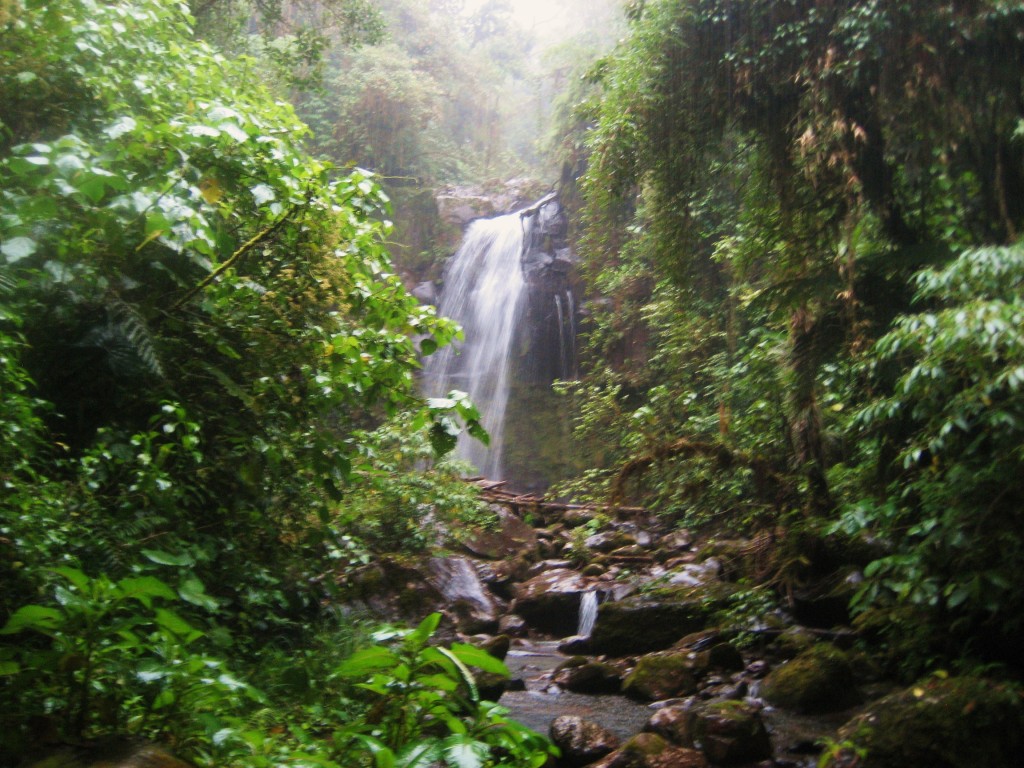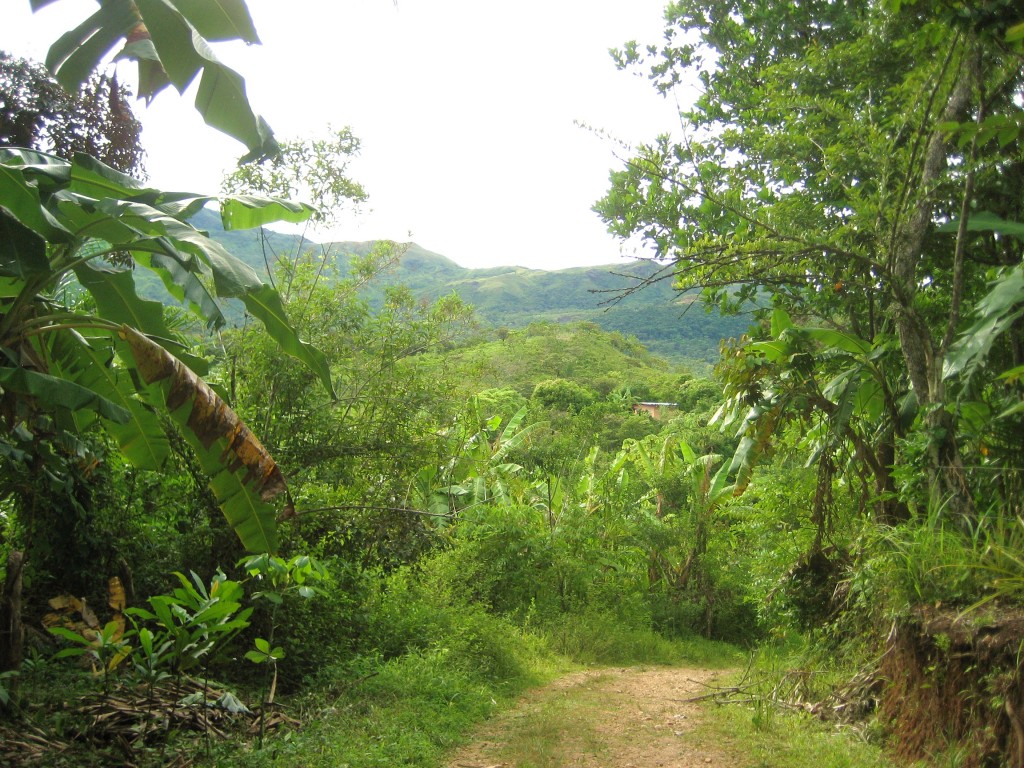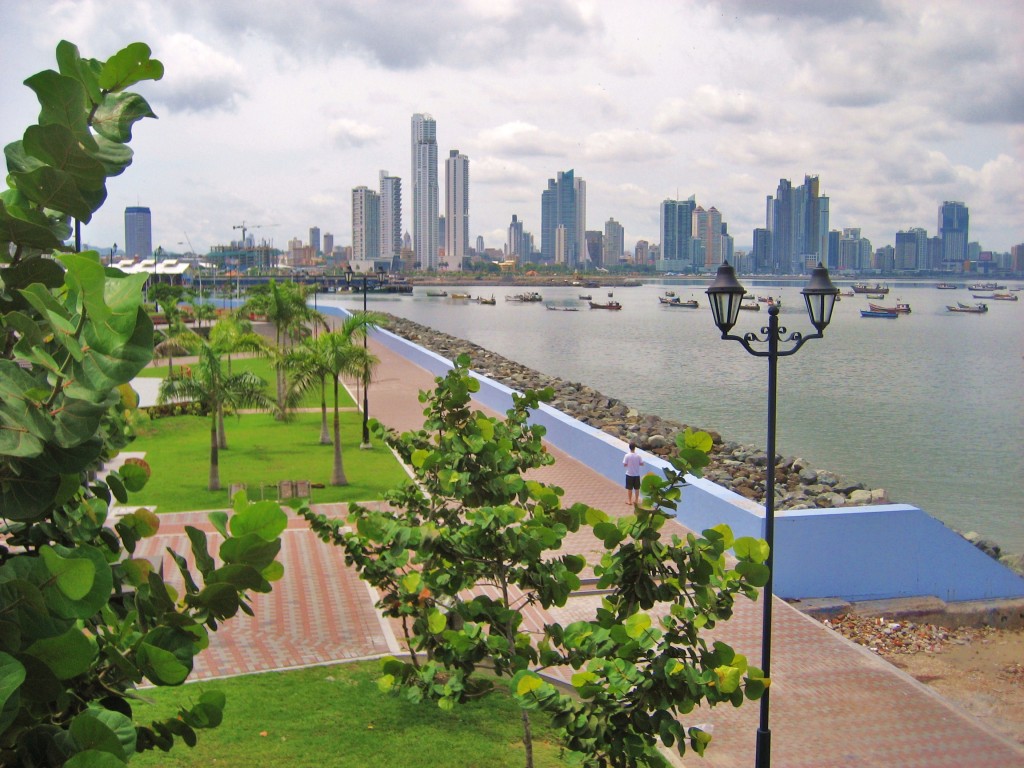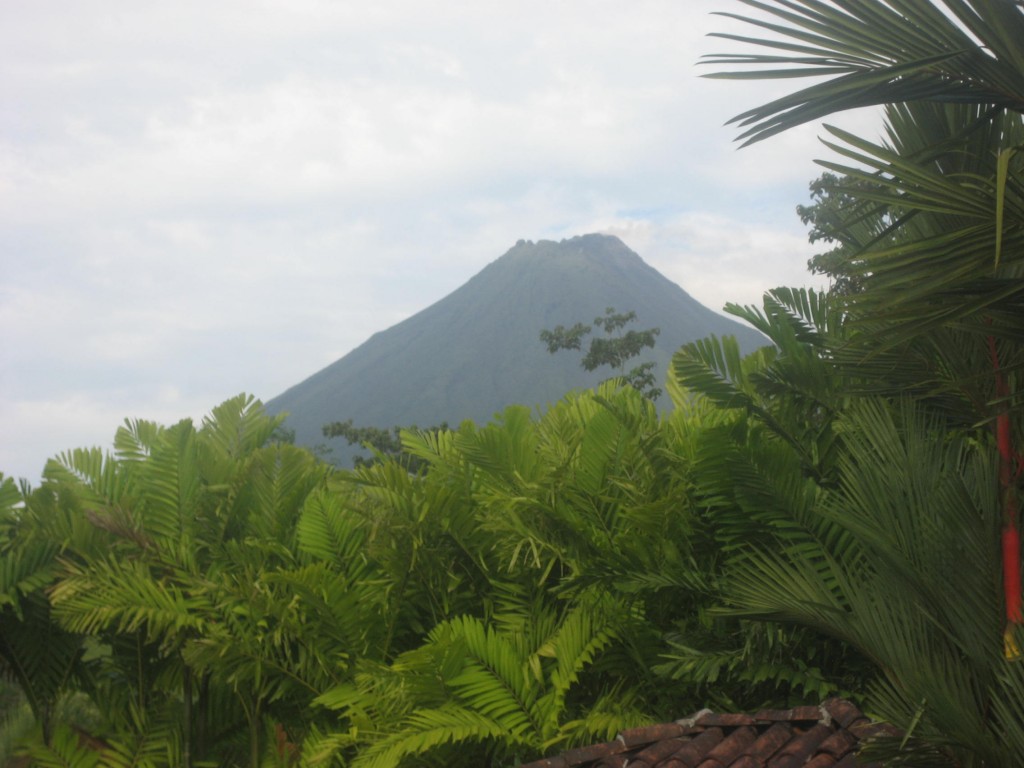Boquete/waterfall hikes
I will try to guide all the “save a buck” adventurers to the places I hiked with no guide or group. Common sense and good care is needed, as ill intended people can be found in any country you travel, and the forests are full of life that includes spiders and snakes. If you would like to hike to the waterfalls on your own, take the bus from the main street in Boquete. You will see the buses in front of the grocery store located on a corner, the one with the big red and white sign with beer bottles on top. The bus will say Alto Quiel and Bajo Mono on the front window. Take it to the last stop and ask when they return and what time the last one is running. When you exit the bus, the road in front splits three ways. To the left: The unpaved road to the left will take you to a waterfall with an entrance fee of $3.00. Soon you will see a metal gate and the sign on it will say “Familia Landau”. Their house is to the left of that gate and someone will approach you for the fee. The road to the waterfall is the one past the gates. This hike is mostly in the shade of the forests and you will cross a few mountain springs, some over metal bridges. The time to get there can be anywhere from 30 minutes up, depending on your speed and number of stops. It certainly is not a flat terrain but it is shaded and rich with vegetation. The waterfall at the end is high and if you want to refresh you can stay under its fall but there is no pool to swim in at the bottom. Straight ahead: The road ahead from where the bus stops will take you to three waterfalls with a $5.00 entrance fee. It is still a paved road for about another 1.5 km. You will see a big blue and white sign on the right when the road splits again and you will have to take the unpaved road to the right. The wooden smaller signs will guide you. After you cross the river on the hanging bridge there is another arrow pointing uphill. You will follow the path up, through an iron gate at some point and up even more. You will reach two wooden homes on the right. One is painted blue now and this is where you will be approached for the entrance fee. You will still have to go higher. It is a harder climb if, like me, you are not used walking up mountains. It took me 30-40 minutes from the point the paved road ended up to the first waterfall. I did not stop at all, even as the climb was making me sound like a tractor with a noisy engine. Yet, the view is beautiful. In the beginning it is out in the open, not much in the way of forests, and being less covered you have a wonderful open view of the surrounding mountains and valleys. The first waterfall you will reach you can view from across, sitting on the benches specially positioned there. To the second and third waterfall you will have to walk 10 minutes more (for each) through forests and on upward stairs. If it rains the path becomes muddy and slippery and the forest dark. I had that luck after the second waterfall and I had to walk in the rain all the way back. To the right: That might be for you to discover. If you do, please post your comments here so others will know what is found there, too. It is a paved road and someone told me a free waterfall is 10 minutes away. I walked a bit, found one small waterfall and kept going as I did not believe that could have been it. Fifteen minutes away there was still nothing else and I turned back. The walk was nice but since I did all of this in one day I decided to give up on this last new direction. I met two people going that way. They were told the free waterfall was 3 km away. If you venture that way please take pictures of the fall you find and share them with the rest of us. Another one of the rare free things left to do in Boquete is the garden called “Mi Jardin Es Tu Jardin”. It is within walking distance from town and has a gorgeous view of the surrounding mountains. Donations are appreciated but not asked for and the person in charge is funny. He can tell you the story of the garden if you speak Spanish. If all my understanding was correct then he said that the present owner lives in David and works or worked in road construction. His father was a well traveled businessman (“negocio”) and stock market investor (“bursa”). He was born in 1910 and passed away in 2010, leaving the garden to his son from David. He was inspired by places he had seen in his travels and different magazines and made requests to add one thing or another by showing pictures to his crew of gardeners. Since coffee plantations are abundant in the region I asked if he drank coffee to live 100 years or just water. I was told vodka and coffee. The longevity secret is now yours. LOL Also, if you will be in Boquete on a Tuesday, there is a local market before noon. Might be fun to see. It is on the first right after the bridge.




